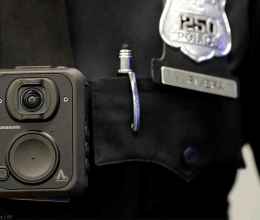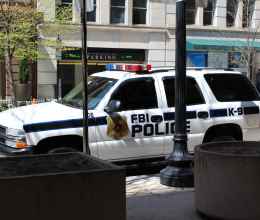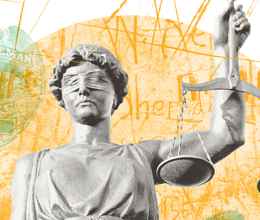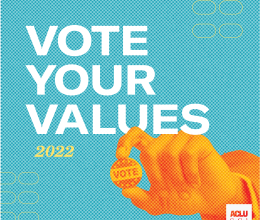
Death of L.A. teen at hands of cops was caught on tape. But refusal to release video has some questioning policies, use nationwide.
By Peter Bibring and Catherine Wagner
The following article was first published in USA Today.
Earlier this month, a too familiar tragedy unfolded in East Los Angeles when Los Angeles police officers shot and killed 14-year-old Jesse Romero. Witness accounts vary — the police department says Romero fled when officers approached him on suspicion of scrawling graffiti in his neighborhood, then fired at officers. Some civilians say he had a gun but tossed it away.
As is increasingly common, the incident was captured on officers’ body cameras.
Los Angeles officials have touted body cameras as a way to provide transparency and accountability and build trust between police and the public in moments of crisis. But that’s not how it has played out because the LAPD’s policies for body cameras don’t provide transparency or assure the public that officers will be held accountable.
Instead, the department has stated that it generally holds videos from public viewunless ordered by a court to release them. Romero's family has called for the footage to be released.
According to LAPD policy, officers are able to review body cam footage before talking to investigators. Instead of promoting transparency and trust, LAPD’s body camera program has resulted in more questions than answers.
When body cameras were proposed nationwide, there seemed to be wide agreement they could be a game-changer for police interactions, oversight and community relations. Public support has been through the roof. And body cameras have provided important evidence in at least some of the rare decisions to fire or criminally charge officers for shootings or dishonesty. But as departments put cameras on the streets, the evidence of their effectiveness has been much more mixed. An early study of the small police force in Rialto, Calif., found that officers wearing cameras are much less likely to use force or to be subject to complaints from civilians.
But other studies are far less conclusive, with at least one showing an increase in the use of lower-level force, and another that use of force increases when officers have more discretion over when to activate cameras. Against this ambiguous backdrop, police reform advocates have raised concerns about the cameras’ privacy implications, surveillance potential and susceptibility to misuse.
Despite these questions, departments nationwide are moving to adopt body cameras. It is vital that those departments have strong policies that ensure cameras are used for accountability, not surveillance.
Departments must clearly require officers to record every investigative interaction with a member of the public. While constant recording could risk civilians’ and officers’ privacy, departments can — and must — monitor compliance and discipline those who fail to record when they should. Officers who repeatedly fail to record incidents should be identified and corrected — or fired — long before they’re involved in a serious incident.
When there’s a shooting or other investigation, policies must require officers to give initial accounts of what happened and why they acted as they did before watching the body camera video. Seeing the video allows cops who are inclined to lie to tailor their story to the evidence. Even for officers who try to tell the truth, seeing the video will impact how they remember an incident. What helps investigators piece together the whole truth is the officers’ subjective memory of what they thought at the time. The police don’t let other witnesses watch the video of a shooting before providing a statement, or show other suspects the evidence in a case before interviewing them. Police shouldn’t have such an advantage.
Video of shootings and other potential misconduct must be released, pursuant to policies that ensure they don’t just get out when it helps the officers. Transparency allows the public to judge for themselves whether police are acting in keeping with a community’s values, and whether the institutions charged with holding officers accountable are working.
Finally, departments should clearly prohibit use of body cameras as surveillance tools. Video shouldn’t be accessed unless there’s reason to think it contains evidence of crime or misconduct, and data-mining tools such as facial recognition mustn’t be used on the video. Moreover, strict limits should be placed on how long footage is retained. The public supports body cameras as tools for police accountability. Mission creep into surveillance should be stopped at the outset.
The policies that govern the use of body cameras matter. Sadly, a recent study shows many departments’ policies are seriously flawed, if they have any public policy on the cameras at all. This can and must be fixed.
Body cameras will never be a cure-all for police misconduct or the crisis of confidence in law enforcement that many of us feel. But if they are to be any help at all — and they could be — they must be done right.
Peter Bibring is director of police practices and senior staff attorney at the ACLU of SoCal; Catherine Wagner is staff attorney at the ACLU SoCal.





